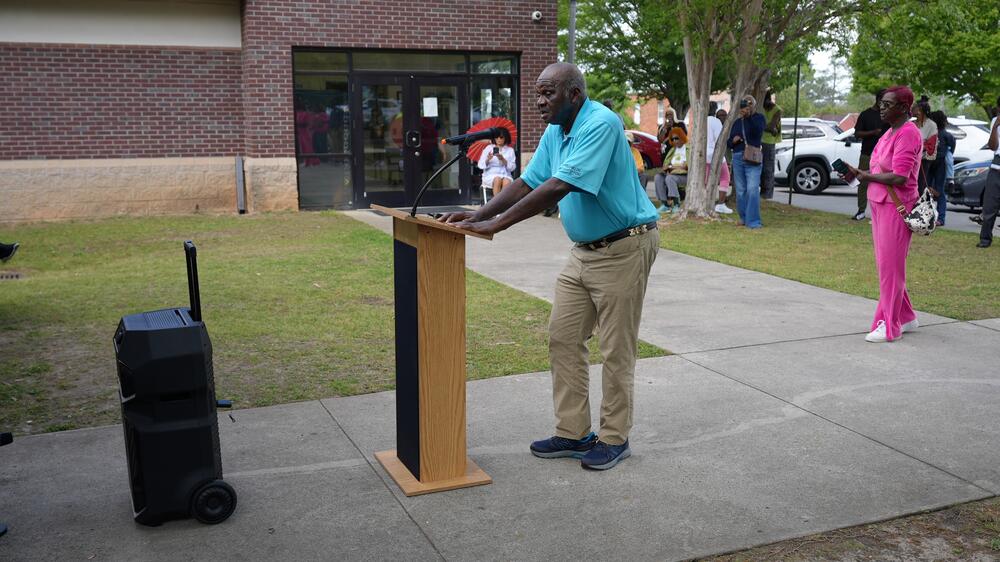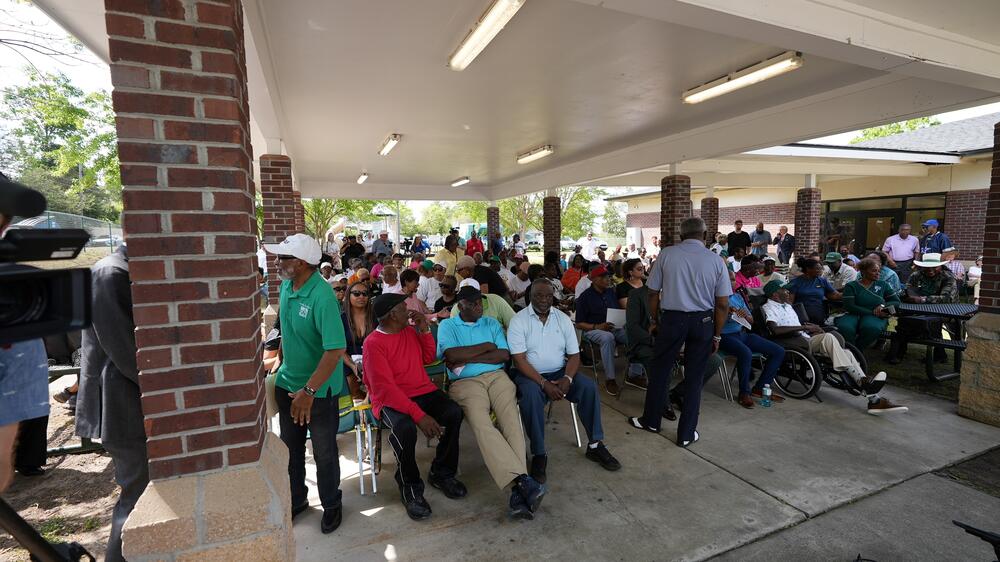
Caption
Former golf caddy Otis "Buck" Moore recalls his experience working at Augusta National.
Credit: Chase McGee / GPB News

Former golf caddy Otis "Buck" Moore recalls his experience working at Augusta National.
In Augusta’s Sand Hills neighborhood, a 25-foot-long, 1,200-pound golf tee sculpture is the latest piece of Masters history.
Along the tee, you’ll find faces of legendary Black caddies like Willie Peterson Jr., Edwin B. McCoy Jr., and Willie “Pappy” Stokes, the “Godfather of Caddies.”
There to remember their counterparts were a handful of living caddies — people such as Otis “Buck” Moore, who drove a truck for work each week, looking forward to the weekend when he could caddy.
“I'm just privileged to be here with everybody, all the people that turned out to see us," Moore said. "And, you know, that they show you that, you know, you ain't forgotten, you know what I'm saying?”
The tee is ornately painted in artist Baruti Tucker’s signature “awfingah” style — painted entirely with his fingers. He finished the project over a period of three months, working six-hour days to paint the surface of the tee.
Joyce Law is the chair of the Commemorative Masters Champion Caddies project. She explained the imagery on the tee.
“The eight purple spots denote eight decades of exclusive service by African American caddies," she said.
Until 1983, club policy dictated only local African American men could work as caddies.

Former caddies line the front row of the unveiling ceremony.
“As the butterflies find plants and flicker around, to our amusement,” she added, “they remind us of the ongoing impact of golf upon our livelihoods and quality of life.”
But Law emphasized one specific bloom.
Around the flat end of the tee sculpture, a wreath of azaleas represent the “Amen Corner,” collectively referring to Augusta National’s infamous 11th, 12th and 13th holes, which can make or break a golfer’s round.
In the process of making the mural, the project committee realized some history needed to be corrected. Until recently, one of golf’s greatest shots featured an incorrectly identified caddy.
Thanks to interviews with local families and corroborating documents, the crowd celebrated John Henry “Stovepipe” Gordon as the caddy who worked with Gene Sarazen on the day he hit the famous “Shot Heard ‘Round the World” on the 15th hole of Augusta National in 1935.
The tee will be open to the public as the Masters Tournament’s practice rounds begin Monday.